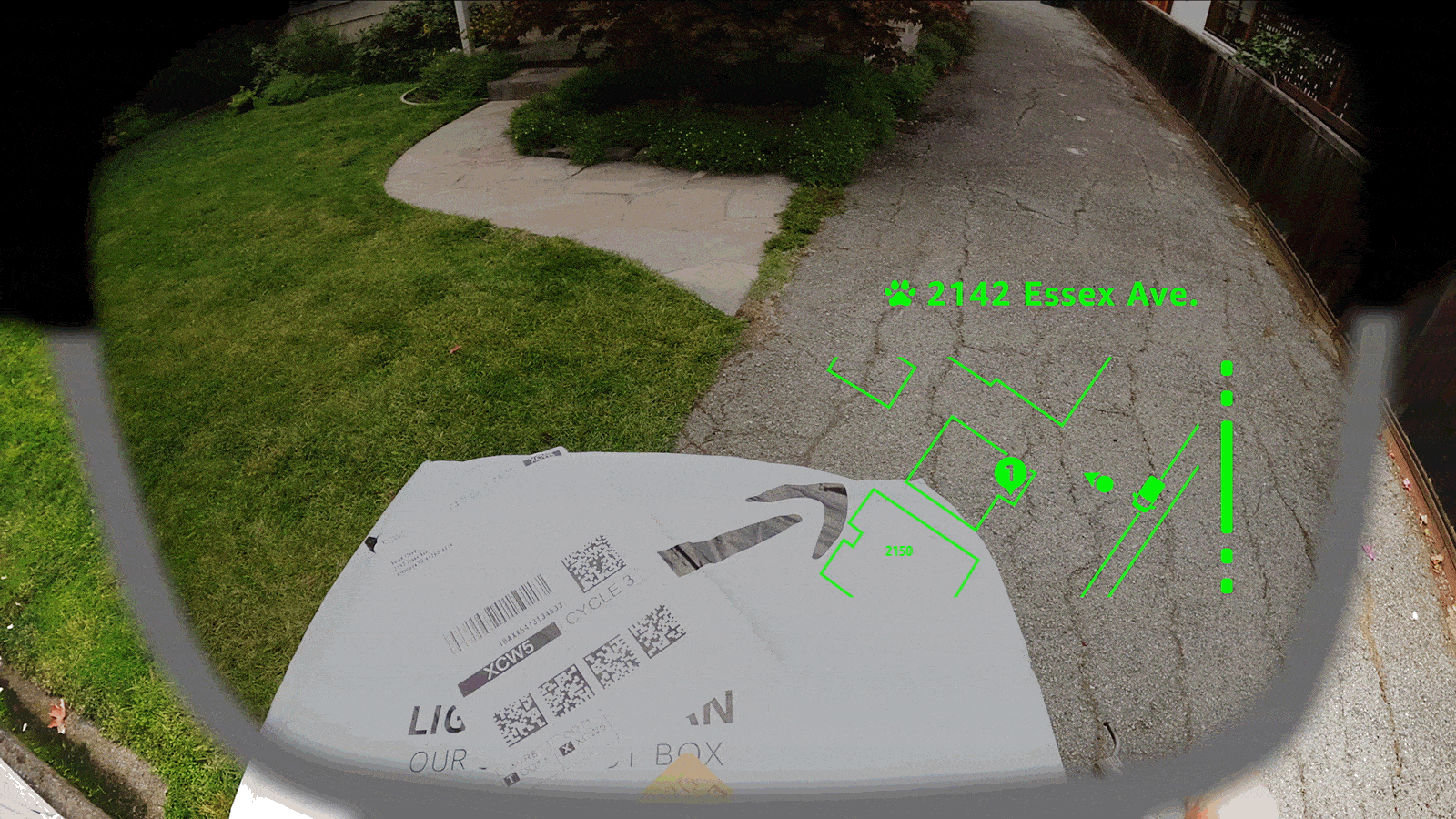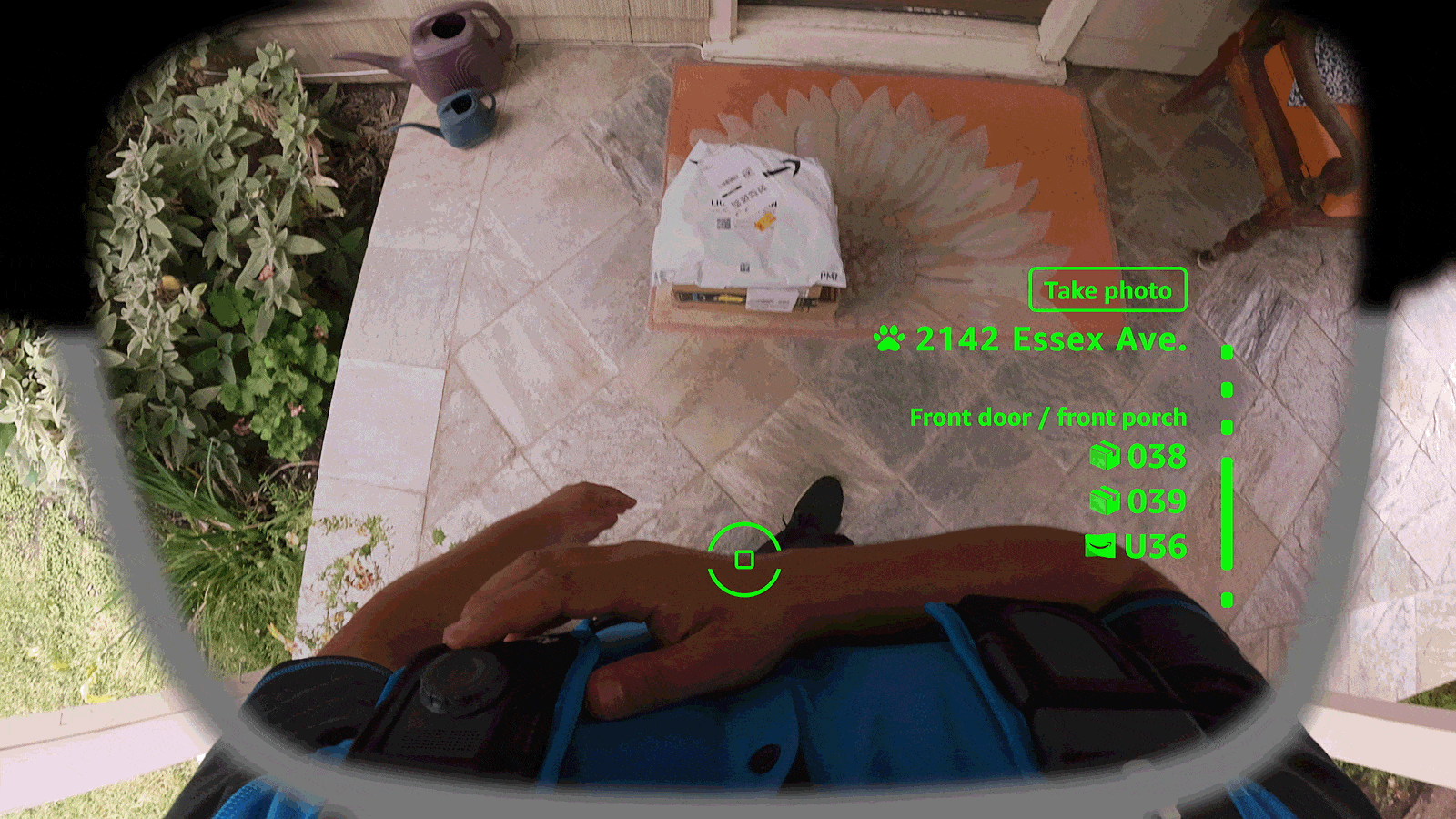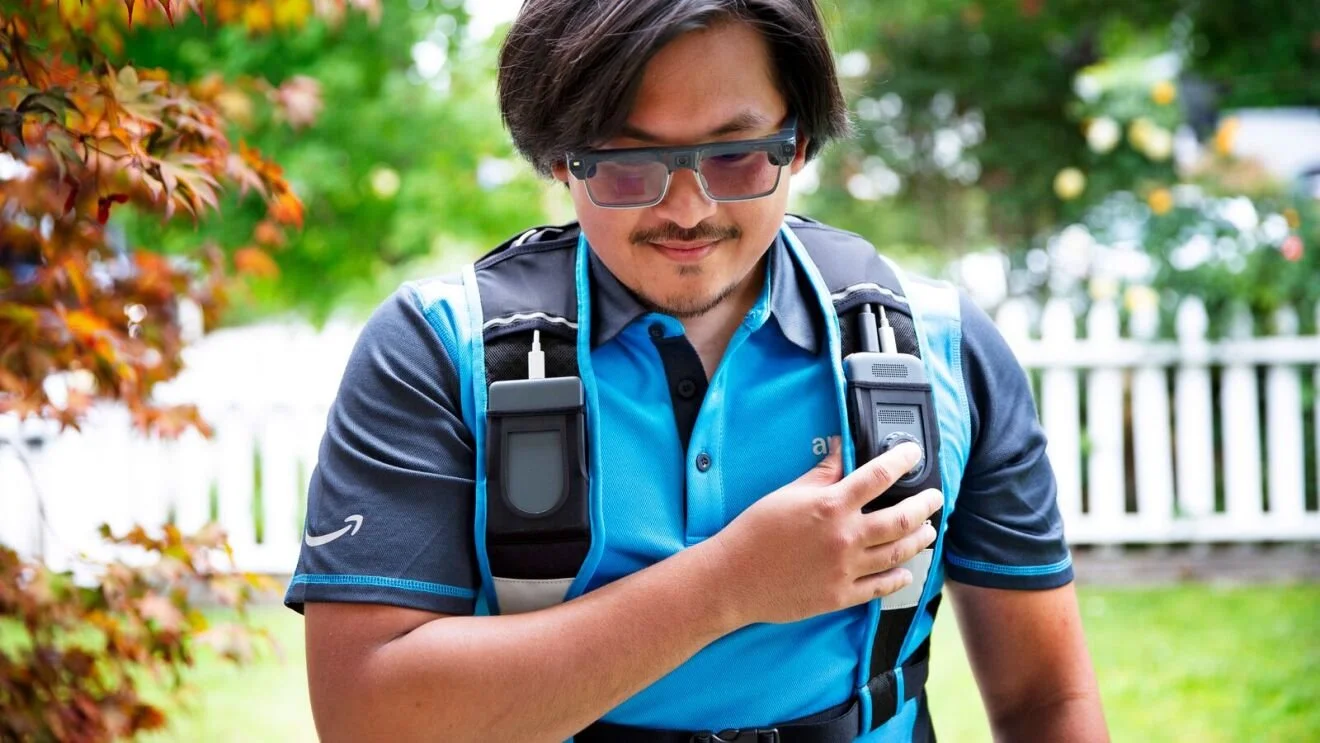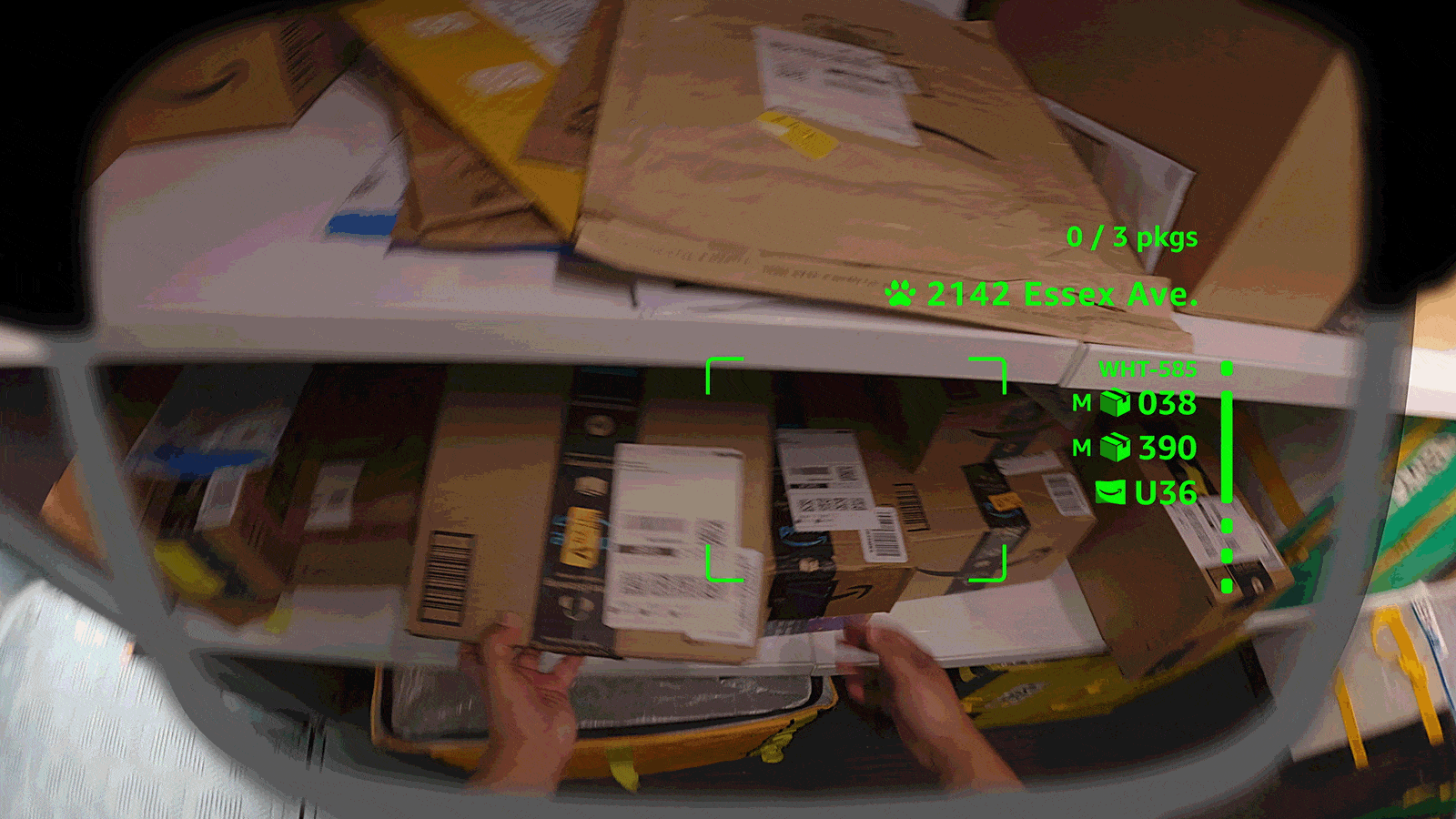Amazon Smart Delivery Glasses
Overview
Amazon’s Smart Delivery Glasses allow drivers to navigate routes, scan packages, and receive on‑property safety alerts—without pulling out a phone. The glasses are lightweight, fit securely, and keep the wearer’s attention on the task and environment.
As Design Technologist & UX Engineer, I was the DRI for the input mechanism: defining the interaction model, building hardware prototypes, running UXR, and engineering the green‑monochrome UI system.
Challenge
Create an input that’s as fast as a phone, works with gloves in rain/noise/motion, and never fails in “performance mode.” Voice, gesture, and temple touch were ruled out for reliability and speed. The answer had to be tactile, glance‑free, and robust.
Constraints
- Must be faster than phone workflows
- Operable offline & in extreme conditions
- Eyes‑free, glove‑compatible
- Single‑color (green) display hierarchy
Early Exploration
I tested whether the phone could double as a controller: a D‑pad layout and a touch‑gesture surface.
UXR showed both were slower and error‑prone with gloves and movement. A dedicated tactile device was required.
Defining the Input Paradigm
Temple touch made users hunt for hotspots; voice failed in outdoor noise and across accents. I proposed a separate tactile puck controller to keep interaction reliable and eyes‑free.
Rapid Form Study
Cardboard + foam mockups established size, angle, and hand feel before electronics—surfacing accidental‑press risks when carrying boxes.
User Input Techniques - Figma
Creating a User interface has a chicken - egg problem, create hardware to follow Information Architecture or vise versa. I chose to create a Flow of Delivery Associates how to navigate the information.
Hardware Prototyping
I built five controllers:
Side Scroller, Joystick, Rotational Dial, Linear Up‑Down‑Select, and D‑Pad—to evaluate speed, accuracy, and muscle memory under UXR.
FOV Calibration (Magic Leap)
I built a calibration tool to align gaze and pentascopic tilt, render text at preset offsets, and let users choose their most comfortable FOV while walking. Results guided waveguide placement for production.
Refinement & Engineering Handoff
Hard detents to prevent over‑scroll
Recessed primary button to avoid accidental presses
Grip texture for glove compatibility
Impact
~2 seconds saved per delivery vs. phone
Validated tactile input architecture for Amazon AR wearables
Safety‑first: peripheral, glanceable UI reduces distraction
Established tactile interaction guidelines for future devices
Reflection
Designing input for smart glasses is designing for trust—between human reflex and machine response. As a Design Technologist, I used prototyping to collapse ambiguity. As a UX Engineer, I translated human factors into an interface that works at speed, in motion, and in the real world.
















